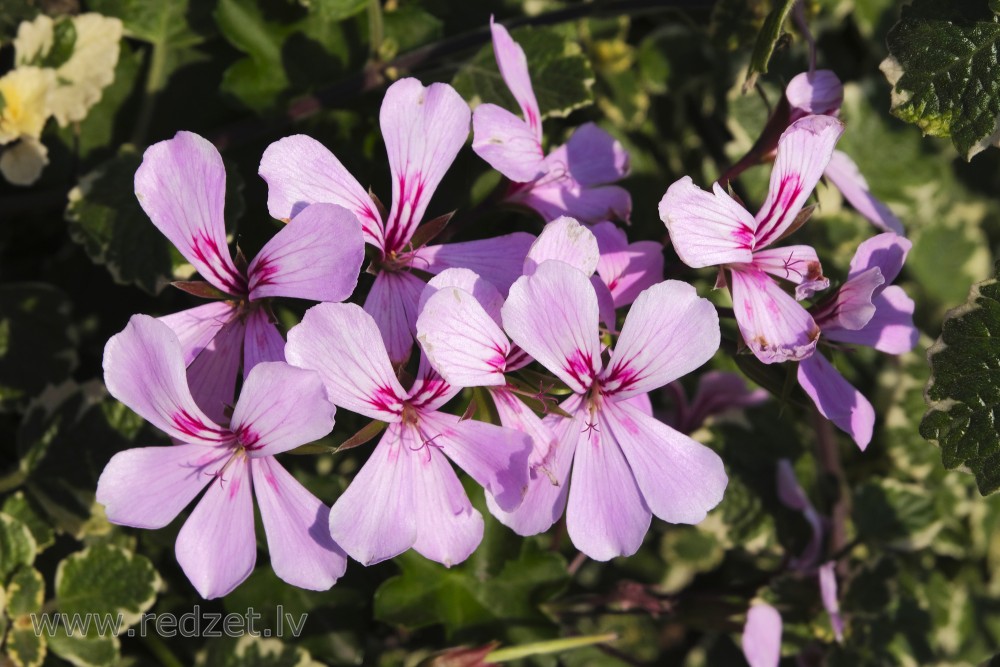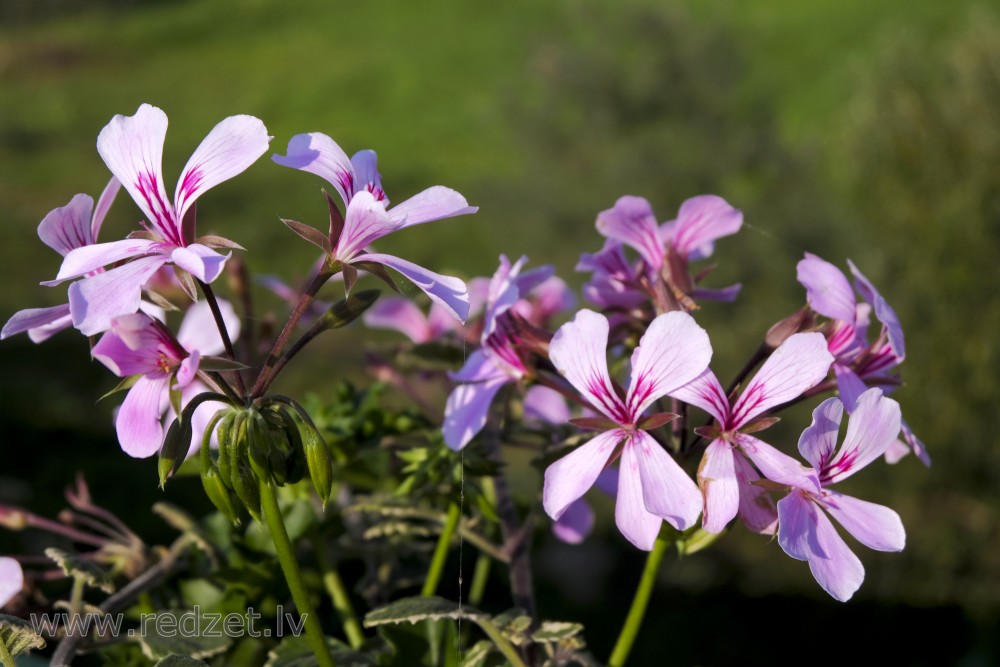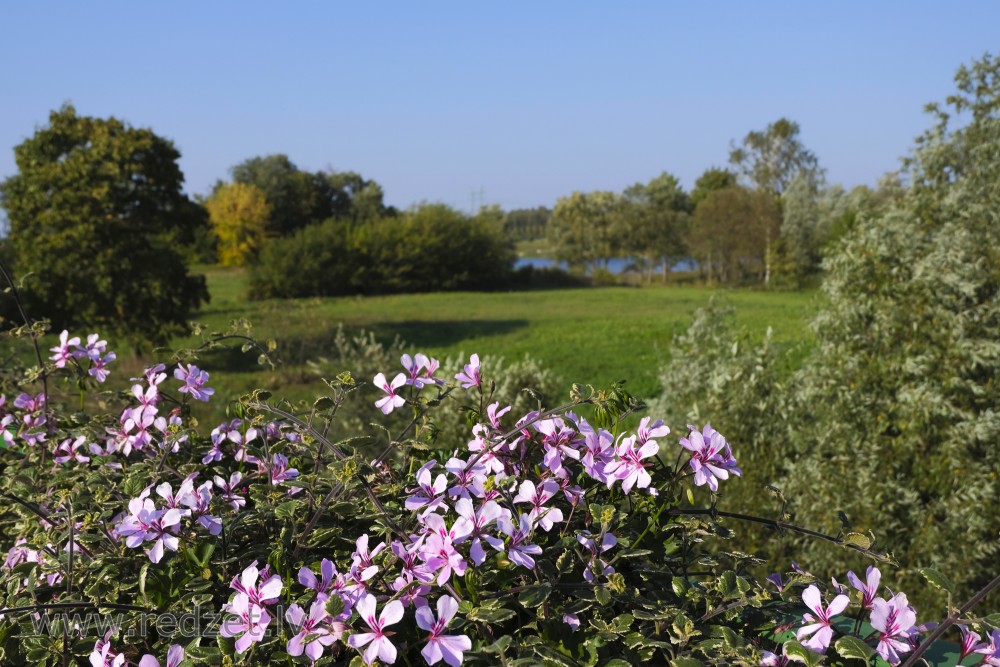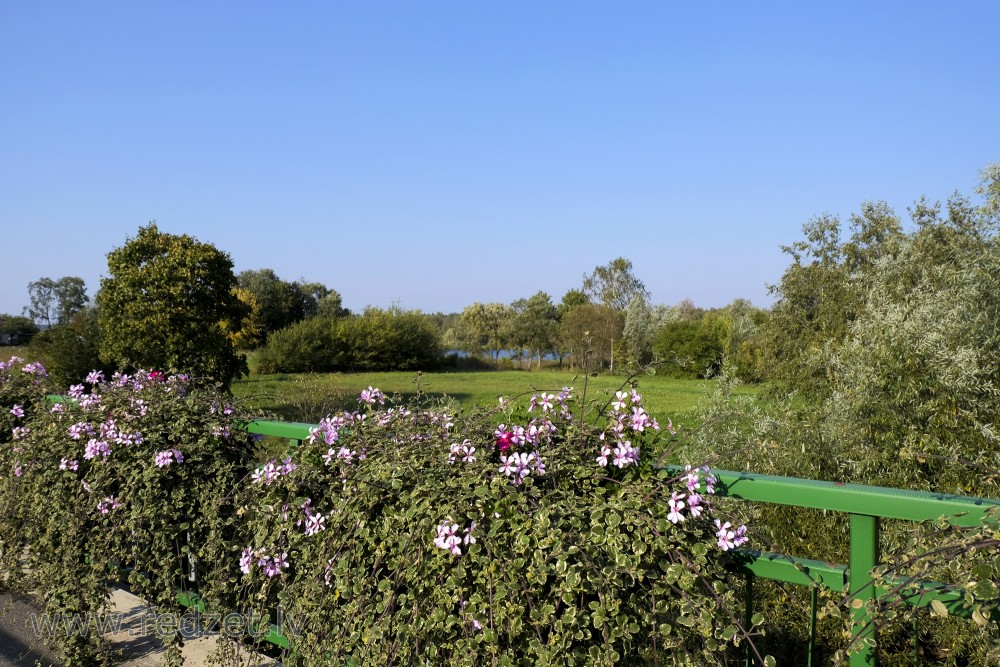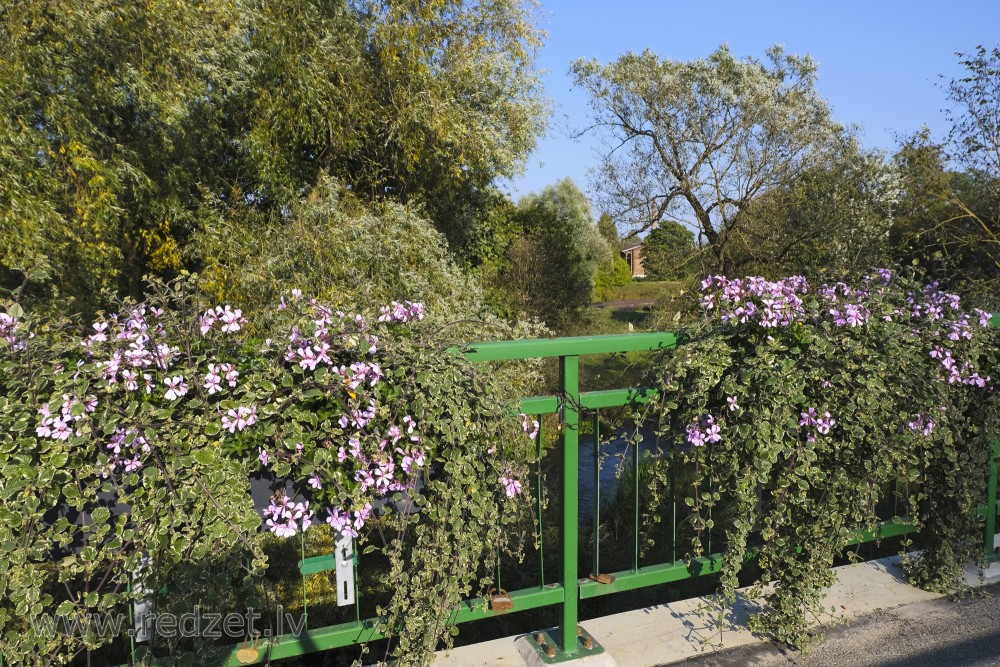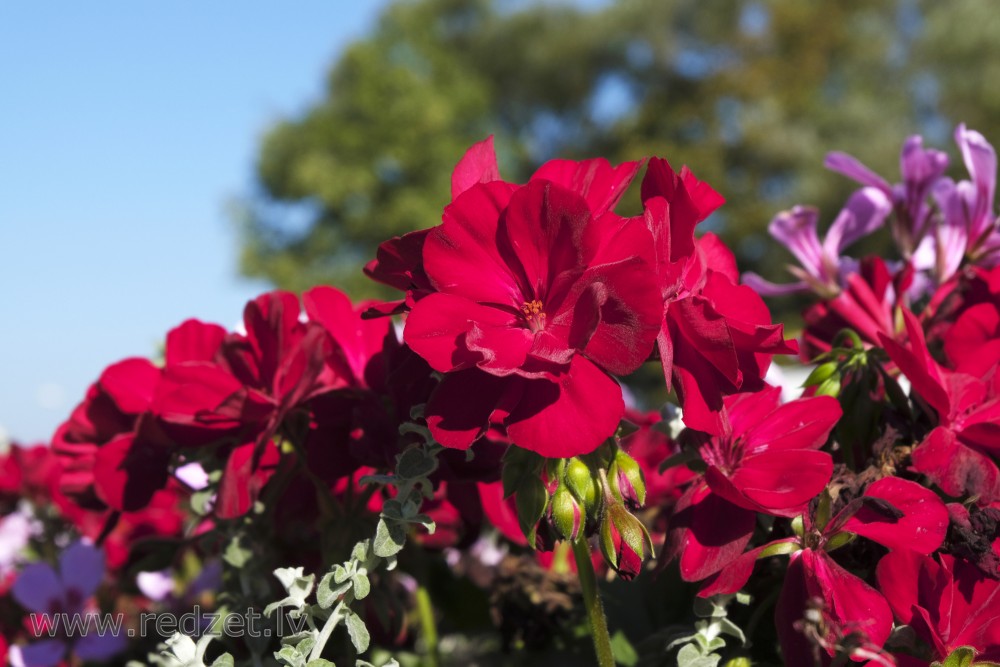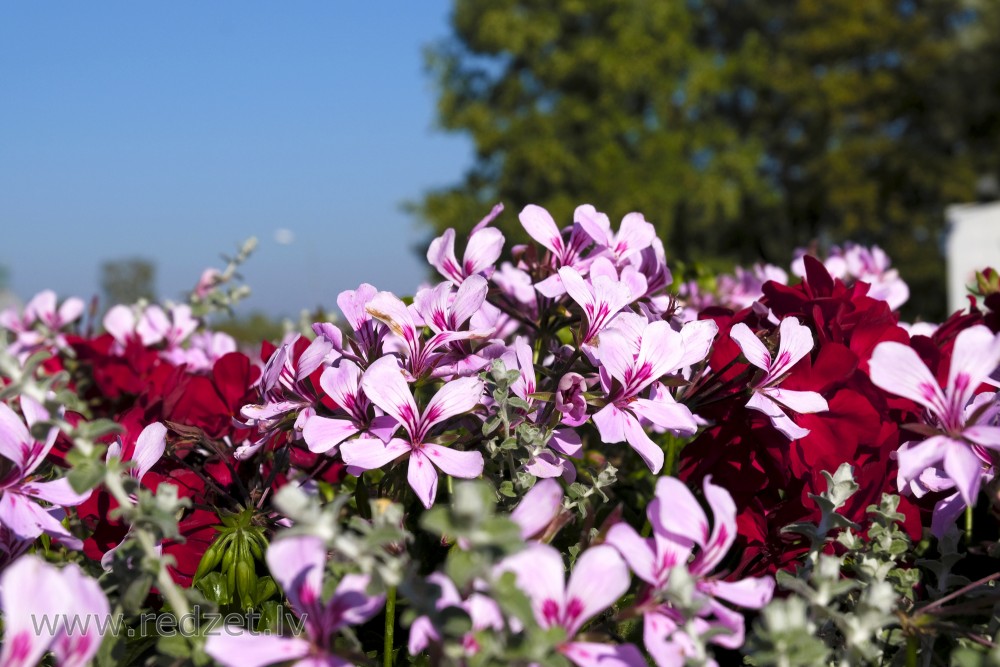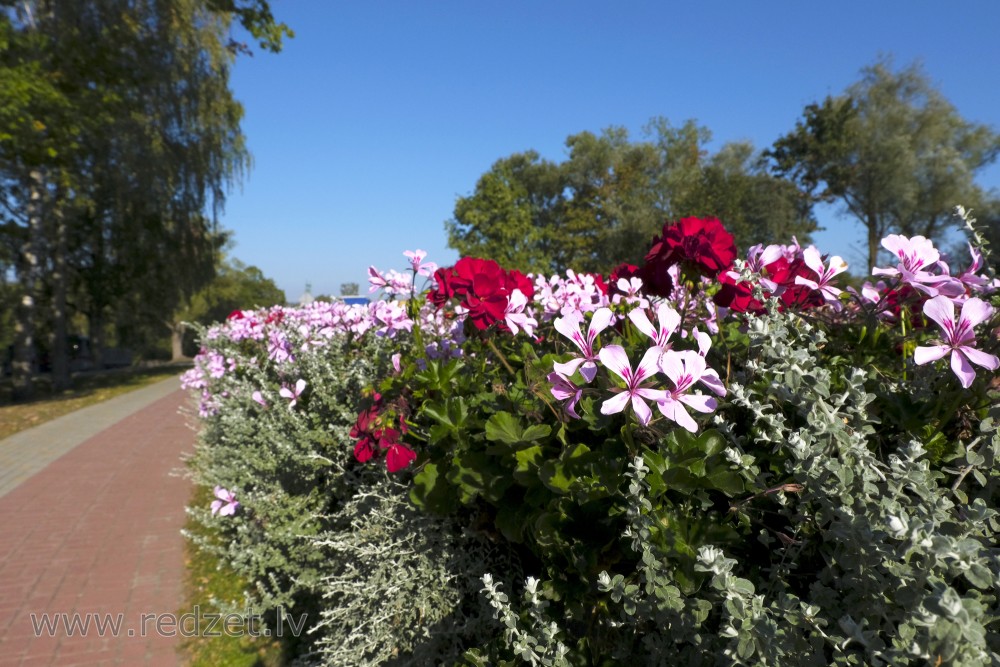Pelargonium peltatum (Ivy-leaved pelargonium)
Pelargonium peltatum is a scrambling perennial plant with shallow or deeply five lobed, circular to heart-shaped, somewhat fleshy leaves, sometimes with a differently coloured semicircular band, that has been assigned to the cranesbill family. It carries umbel-like inflorescences with 2–10, white to mauve, bilateral symmetrical flowers, each with a "spur" that is merged with the flower stalk. It is known by several common names including ivy-leaved pelargonium and cascading geranium.It is native to southern and eastern South Africa. In its home range, it flowers year round but most vigoriously from August to October.
Description
The ivy-leaved pelargonium is a perennial plant that scrambles over the surrounding vegetation and its somewhat succulent, slender and smooth, 3–10 mm (0.12–0.40 in) thick stems can grow to a length of about 2 m (7 ft). The leaves are alternately arranged along the stem, but sometimes seem to be opposite. The leaves have broad oval to triangular stipules of about 7 mm (0.28 in) long and 4 mm (0.16 in) wide, a leaf stalk of ½–5½ cm (0.2–2.2 in) long, and a hairy or hairless, green to greyish green, sometimes with a differently colored semicircular band, more of less fleshy, circular to heart-shaped in outline, on average 3 cm (1.2 in) long and 5 cm (2.0 in) wide (full range 1–6¾ cm × 1¾–8¾ cm). The leaf blade has five shallow or deeper sharp or blunt tipped lobes that spread radially from a point with an entire margin.
The umbel-like inflorescences sit atop a stalk of about 6½ cm (2.6 in) long (full range 4–8½ cm) covered with long soft hairs to hairless. At the top of the inflorescence stalk are long, softly hairy, oval to lance-shaped bracts of about 3 mm (0.12 in) long and 2 mm (0.08 in) wide, which subtend two to ten scentless flowers, each on a long softly hairy flower stalk of 1¾–5 mm (0.07–0.20 in) long. The long, softly hairy floral tube, which is somewhat difficult to distinguish from the flower stalk, is on average 3 cm (1.2 in) long (full range 2–4¼ cm). The five free, purple to light green sepals are lance-shaped, covered in long, soft hairy on the surface facing out, on average 11 mm (0.44 in) long (full range 7½–14 mm). The five free petals are spade-shaped, and whitish, pale pink, pinkish mauve or mauve in colour. The two upper petals sometimes have purple markings, curve back at an approximate angle of 90° and are on average 21 mm (0.85 in) long and 9 mm (0.35 in) wide (full range 15–27 mm × 6–12 mm). The three lower petals curve back slightly and are on average 17 mm (0.65 in) long and 6 mm (0.25 in) wide (full range 13½–21 mm × 3½–7½ mm). The ten filaments are merged into a tube of about 2 mm (0.08 in) long, the free parts of the filaments varying in length within the same flower, between 2 and 11 mm (0.08–0.45 in) long. Only five to seven of the filaments carry a purple, about 2 mm long anther, even in freshly opened flowers (anthers are quickly lost), the upper two on much shorter filaments. The woolly hairy ovary is about 4 mm (0.16 in) long that is topped by a hairy or hairless, about 5 mm (0.2 in) long style that carries five stigmas of about 3 mm (0.12 in) long. These female floral parts develop into a dry splitting fruit, the five parts each consisting of an approximately 7 mm (0.28 in) long, roughly hairy oval base and an about 3 cm (1.2 in) long tail. The bases of these mericarps each contain one hairless, brown, ellipse-shaped seed of about 5 mm long and 2 mm in diameter.
en.wikipedia.org
https://en.wikipedia.org/wiki/Pelargonium_peltatum
Continue reading
